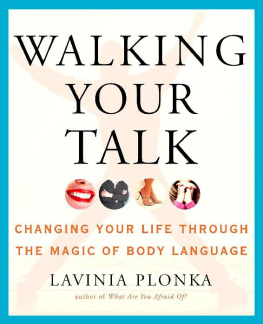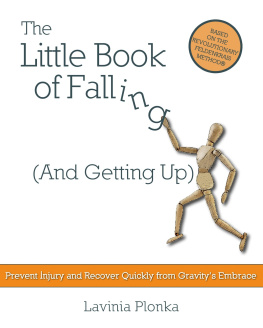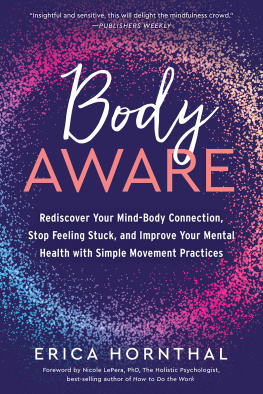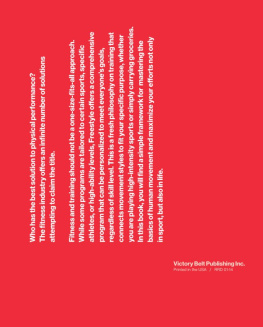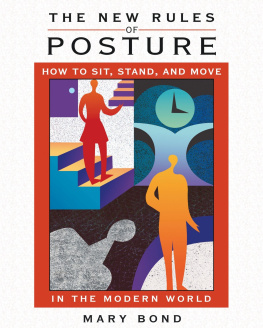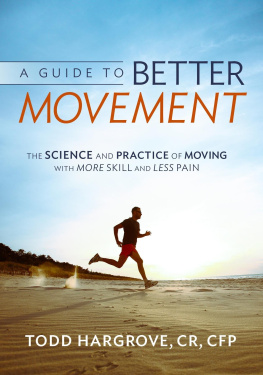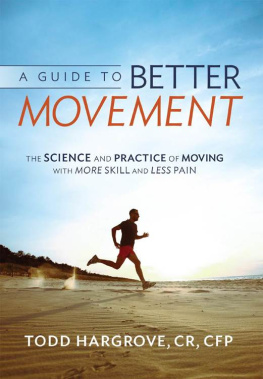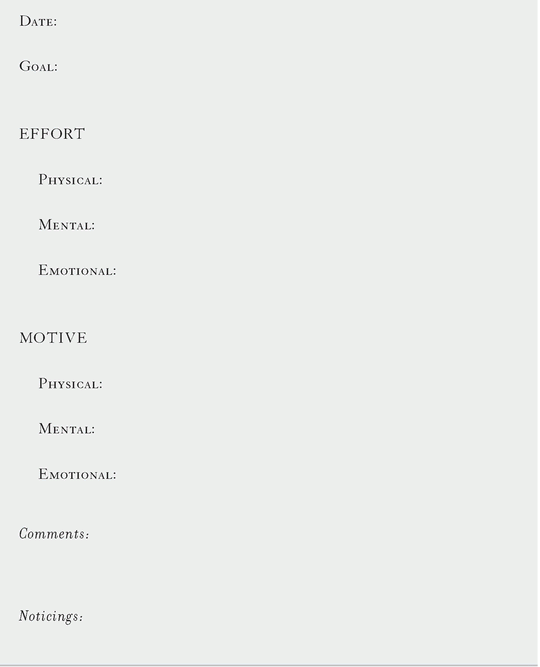ACKNOWLEDGMENTS
This book would not be possible without the hundreds of students who have shared their stories, taken risks, and participated in countless movement experiments. I am also indebted to all my teachersthe list would take pages, and each one has shone another light on my path. I would like to personally thank Laura Facciponti for her help in researching the Alba Emoting Method. Alan Questel, one of Feldenkraiss original U.S. students and a Feldenkrais trainer, mentored me throughout the project. Richard Lipton pressed the crumbling copy of Delsartes System of Expression into my hands one day, saying simply, I think you might get some use out of this. Mitch Horowitz, my editor at Tarcher/Penguin, has a keen eye and an elegant approach to writing that clarified my prose immeasurably. And to all of the workshop sponsors and organizers around the country who have dedicated time and energy to bringing this work to their communitiesI thank you.
APPENDIX: WORKSHEET FOR GOAL SETTING
Your goals can be clear plans that you are actively working on (such as finish graduate school, renovate the kitchen) or ongoing wishes that have been with you for years (such as lose forty-five pounds, find a meaningful relationship) or impossible dreams (such as sell my screenplay, get out of debt). You may find that there are several different efforts and motivations at work, so feel free to list them all. The comments can be about anythinga free association. The noticings are an opportunity for you to look at what youve written and reflect on how your words connect with your behavior as well as your body language. Here is an example for two weeks of one goal.
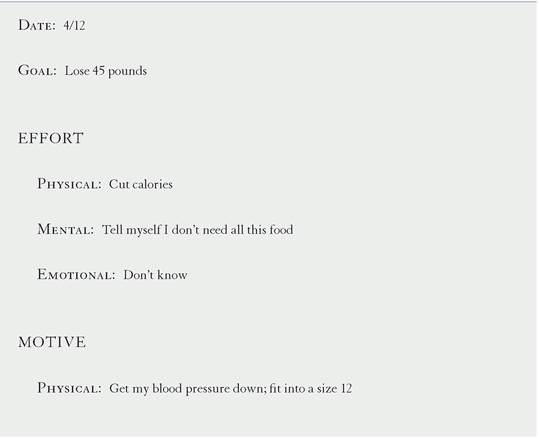
MENTAL: I dont know what my thoughts are; I should pay attention
EMOTIONAL: Would like a date once in a while
Comments: I love food, I hate the way I lookhey, wait, isnt that an emotion?
Noticings: I get hungry every day at 3 P.M. Its around the time when things get boring at work... and I get hungry about an hour before bed, even after dinner, just sitting there... actually, Im always hungry. The minute I finish a meal Im thinking about the next one.
DATE: 4/19
GOAL: Lose 45 pounds (ARGH!)
EFFORT
PHYSICAL: Its not so easy to cut calories; I thought it would be easy. Maybe I should work out.
MENTAL: Okay, maybe I should come up with some kind of sentenceyou know like, if you didnt eat this cake, you could be gorgeous. Ugh!
EMOTIONAL: This sucks. Just the thought of doing this makes me depressed.
MOTIVE
PHYSICAL: I will be healthier. Well, why dont I want that?
MENTAL: My thoughts are a jumble around this.
EMOTIONAL: Im scared. What if I try and fail? What if I still dont get any love? What if Im still ugly?
Comments: Why? Why am I always hungry? Why do I think Im ugly? Is that a thought or an emotion?
Noticings: Everything I write is negativehating the way I look, being depressed. My chest is all caved in and three times today I noticed that my fists were clenched. Am I angry at something? And what is that feeling in the pit of my stomachis it really hunger?
ABOUT THE AUTHOR
A former artist in residence for the Guggenheim Museum, Lavinia Plonka has taught workshops and consulted around the globefrom the Irish National Folk Theater to Esalen, and inner-city schools to rehabilitation centers. Her first book, What Are You Afraid Of ? A Body/Mind Guide to Courageous Living, has been translated into five languages. She is director of the Asheville Movement Center in North Carolina, where she maintains a busy practice.
CONCLUSION
We have spent too many hundreds of years blind to what is right under our noses, and above our noses for that matter. Thanks to a combination of puritanical thought and the mechanistic notion of I think, therefore I am, we have forgotten this most profound biofeedback system. In fact, biofeedback is a system in which you are hooked up to a machine in order to understand how you are feeling! Why not bypass the middleman (or middle machine) and return to the direct knowledge that has been available for all time? You contain all the secrets of the universe within youas the Sufis say, its as close as your jugular vein. As the prevailing mechanistic paradigm shifts to a more holistic view of the organism, we can begin to see the patterns of our postural choices reflected in our relationships, emotional states, and physiological health. As science digs deeper into the subatomic structure of the human organism, we may discover that even our atoms dance in an intentional manner that is reflected in our body language. Certainly we are just at the beginning of this exciting journey that can only lead to a greater understanding of our place in the universe.
RESOURCES
BOOKS
Gregory S. Aldrete, Gestures and Acclamations in Ancient Rome (Baltimore: Johns Hopkins University Press, 1999).
David F. Armstrong, William C. Stokoe, and Sherman E. Wilcox, Gesture and the Nature of Language (Cambridge, Massachusetts: Cambridge University Press, 1995).
Alain Berthoz, The Brains Sense of Movement (Cambridge, Massachusetts: Harvard University Press, 2000).
Hyrum Conrad, editor, The Development of Alba Emoting (Rexburg, Idaho: Brigham Young University, 2003).
Antonio Damasio, Descartes Error (New York: Avon Books, 1995).
______. The Feeling of What Happens (San Diego: Harcourt, 2000).
Charles Darwin, The Expression of the Emotions in Man and Animals (Chicago: University of Chicago Press, 1965).
Isha Schwaller de Lubicz, The Opening of the Way (Rochester, Vermont: Inner Traditions, 1981).
Karlfried Graf Durckheim, Hara: The Vital Center of Man (Rochester, Vermont: Inner Traditions, 2004).
Ken Dychtwald, BodyMind (New York: Tarcher/Putnam, 1986).
Paul Ekman, Emotions Revealed (New York: Henry Holt, 2003). ______. What the Face Reveals (New York: Oxford University Press, 1997).
Moshe Feldenkrais, Awareness Through Movement (San Francisco: Harper, 1991).
______. The Elusive Obvious (Cupertino, California: Meta Publications, 1981). ______. The Potent Self (Berkeley, California: Frog Ltd., 2002).
Belinda Gore, Ecstatic Body Postures (Santa Fe, New Mexico: Bear and Company, 1995).
Henry Gray, Grays Anatomy of the Human Body (Philadelphia: Running Press Books, 1974).
Claude Kipnis, The Mime Book (New York: Harper Colophon Books, 1976).
Marc McCutcheon, The Compass in Your Nose and Other Astonishing Facts About Humans (Los Angeles: Jeremy P. Tarcher, 1989).
David McNeill, The Face, A Natural History (Boston: Little, Brown, 1998).
Candace Pert, The Molecules of Emotion (New York: Touchstone, 1997).
Lavinia Plonka, What Are You Afraid Of ? A Body/Mind Guide to Courageous Living (New York: Tarcher/Penguin, 2005).
Peter Ralston, Cheng Hsin: The Principles of Effortless Power (Berkeley, California: North Atlantic Books, 1999).
Agya Rangacharya, The NatyasastraEnglish Translation with Critical Notes (New Delhi, India: Munshiram Manoharial, 2003).

